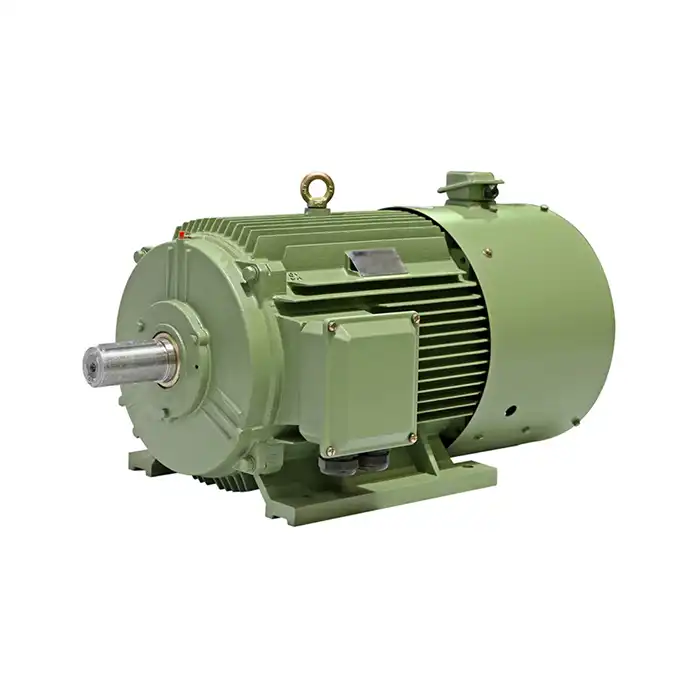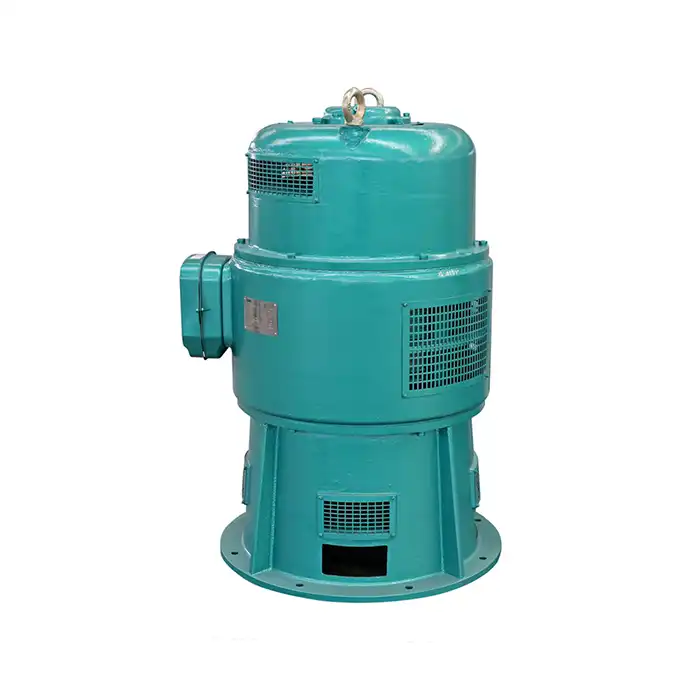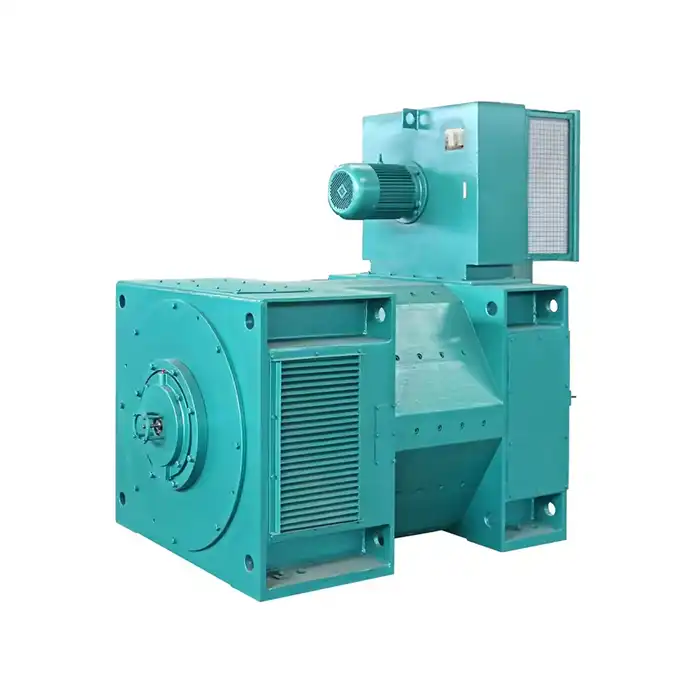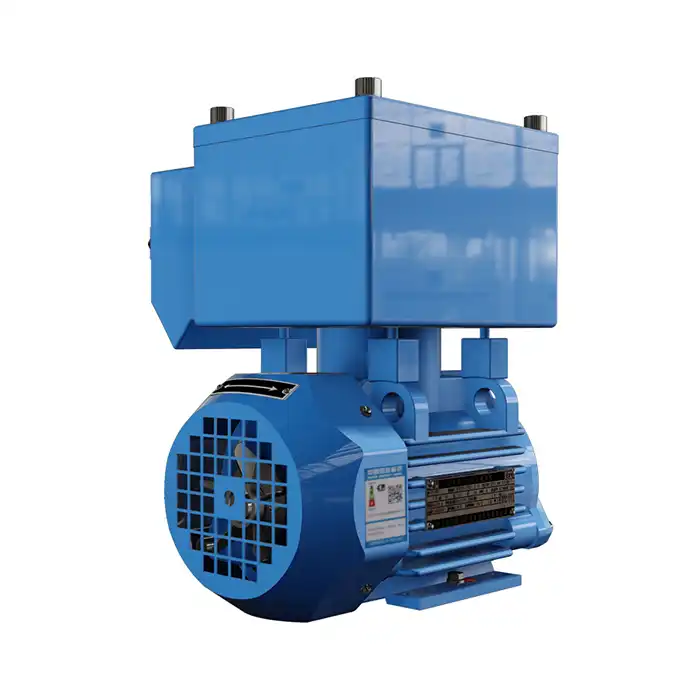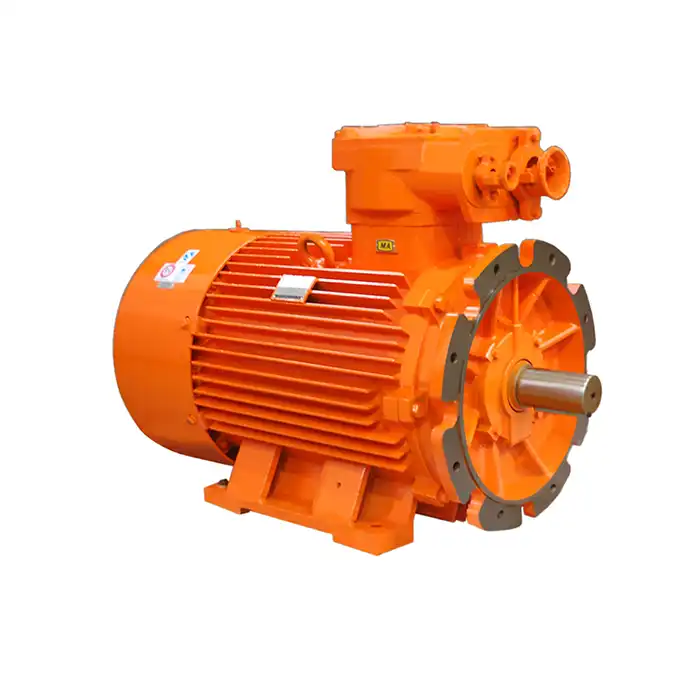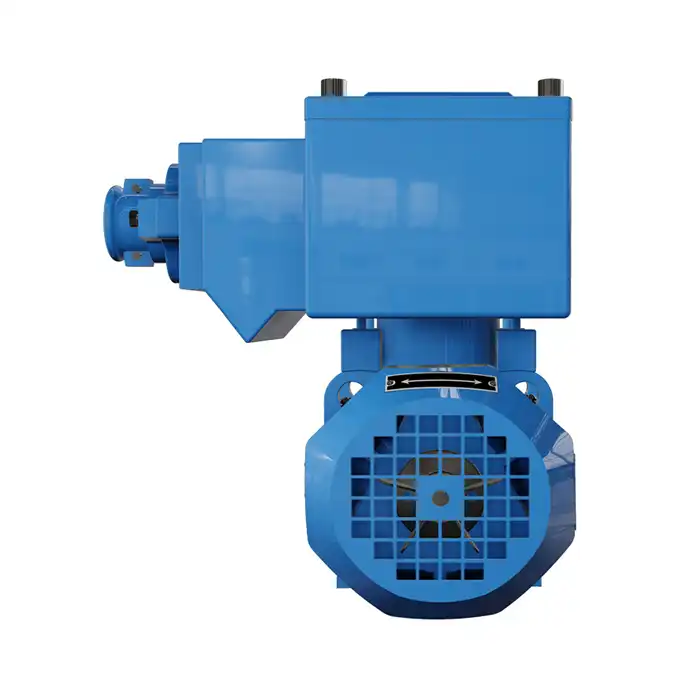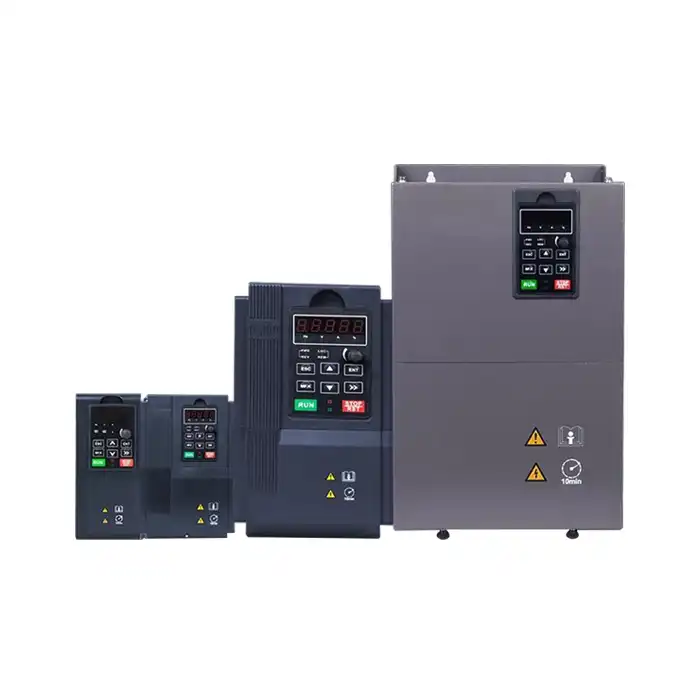In the realm of industrial safety, particularly when dealing with potentially explosive atmospheres, two terms frequently arise: ATEX and Ex d. Both are crucial in ensuring the safety of equipment and personnel in hazardous environments, such as those involving an exd motor, but they serve different purposes and have distinct characteristics. This article aims to clarify the differences between ATEX and Ex d, providing valuable insights for professionals in industries such as oil and gas, chemical processing, and mining.
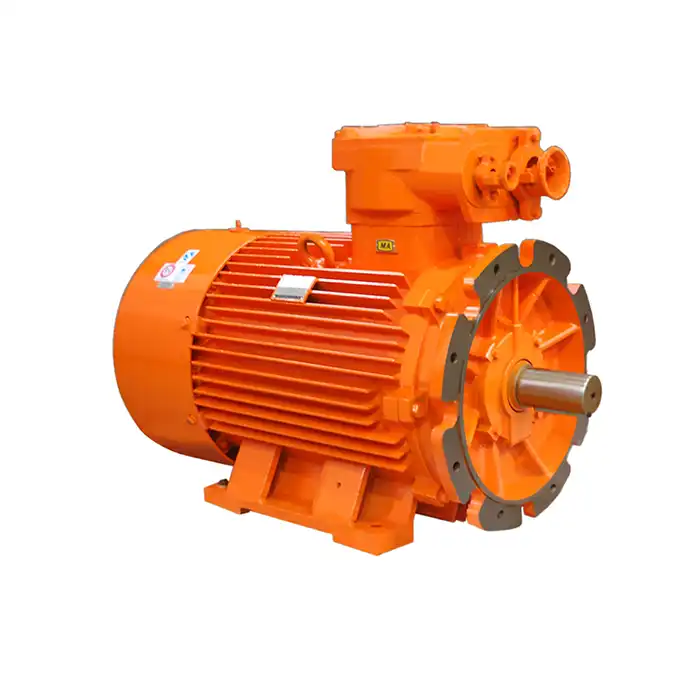
| Power range: | 0.75 kW to 315 kW |
| Voltage: | Low voltage (up to 1000V) and medium voltage options available |
| Frame sizes: | 80 to 355 |
| Protection: | IP55 |
| Insulation class: | F (class H available upon request) |
ATEX vs. Ex d: Regulatory Frameworks Compared
ATEX and Ex d represent different aspects of explosion protection, with ATEX being a regulatory framework and Ex d being a specific type of protection technique. Let's examine each in detail:
Understanding ATEX
ATEX, derived from the French "ATmosphères EXplosibles," is a set of European Union directives that govern equipment and protective systems intended for use in potentially explosive atmospheres. The ATEX directive consists of two main parts:
- ATEX 2014/34/EU (formerly 94/9/EC): This directive applies to manufacturers and specifies the requirements for equipment and protective systems intended for use in potentially explosive atmospheres.
- ATEX 1999/92/EC: This directive is aimed at employers and outlines the minimum requirements for improving the safety and health protection of workers potentially at risk from explosive atmospheres.
ATEX certification ensures that products meet essential health and safety requirements and can be safely used in explosive atmospheres within the European Union.
Decoding Ex d
Ex d, on the other hand, refers to a specific type of protection technique for electrical equipment used in explosive atmospheres. The "Ex" denotes explosion protection, while "d" stands for "flameproof enclosure." This protection method is defined in the IEC 60079 series of standards, which are internationally recognized guidelines for electrical equipment in explosive atmospheres.
An Ex d enclosure is designed to contain an internal explosion and prevent the ignition of the surrounding explosive atmosphere. The enclosure, such as that used in an exd motor, must be strong enough to withstand the pressure of an internal explosion and cool any escaping hot gases to a temperature below the ignition point of the surrounding atmosphere.
Equipment Categories: ATEX and Ex d Classifications
While ATEX and Ex d serve different purposes, they both involve classifications that help determine the suitability of equipment for specific hazardous environments.
ATEX Equipment Categories
ATEX divides equipment into three categories based on the level of protection required:
- Category 1: Very high level of protection, suitable for use in Zone 0 (gas) or Zone 20 (dust)
- Category 2: High level of protection, suitable for use in Zone 1 (gas) or Zone 21 (dust)
- Category 3: Normal level of protection, suitable for use in Zone 2 (gas) or Zone 22 (dust)
These categories correspond to specific zones where explosive atmospheres may be present continuously, occasionally, or rarely and for short periods.
Ex d Classification
Ex d is one of several types of protection techniques defined in the IEC 60079 standards. Other protection types include:
- Ex e: Increased safety
- Ex i: Intrinsic safety
- Ex p: Pressurized enclosure
- Ex q: Powder filling
- Ex o: Oil immersion
Each of these protection types is suited to different applications and hazardous area classifications. Exd motors, for instance, are commonly used in environments where there's a risk of gas or vapor explosion.
Choosing Between ATEX and Ex d Protection
When selecting equipment for use in potentially explosive atmospheres, it's essential to understand that ATEX and Ex d are not mutually exclusive. In fact, they often work in tandem to ensure comprehensive safety.
Considerations for Equipment Selection
Several factors should be taken into account when choosing between ATEX-certified equipment and Ex d protection:
- Location: Consider whether the equipment will be used within the European Union, where ATEX compliance is mandatory.
- Specific hazards: Identify the types of explosive atmospheres present in your facility (gas, vapor, mist, or dust).
- Frequency of hazard occurrence: Determine which zone classification applies to your work area.
- Equipment functionality: Consider the operational requirements of the equipment and how different protection methods might impact performance.
- Voltage range: For electrical equipment, consider the voltage requirements. Some Ex d motors, for example, can operate at voltages of 380V, 660V, or even 660/1140V.
Combining ATEX and Ex d
In many cases, equipment may be both ATEX-certified and utilize Ex d protection. For instance, an Exd motor designed for use in a European chemical plant would need to meet ATEX requirements and incorporate flameproof enclosure protection.
This combination ensures that the equipment:
- Complies with EU regulations for use in explosive atmospheres
- Incorporates specific design features to contain potential explosions
- Is suitable for the particular hazardous zone where it will be used
It's worth noting that while ATEX is specific to the European Union, Ex d and other IEC standards are recognized globally. This means that Ex d equipment can often be used in non-EU countries, provided it meets local regulatory requirements.
Application in Various Industries
The choice between ATEX and Ex d (or a combination of both) is relevant across numerous industries where explosive atmospheres may be present:
- Oil and Gas: Offshore platforms and refineries often require ATEX-certified equipment with Ex d protection for motors, pumps, and control systems.
- Chemical Processing: Manufacturing facilities handling flammable substances rely on ATEX and Ex d to ensure safe operations.
- Mining: Underground coal mines, where methane gas is a constant concern, frequently employ Exd motors with ATEX certification.
- Pharmaceutical: Production areas where fine powders or solvents are present may require ATEX-compliant equipment with various protection methods, including Ex d.
- Food and Beverage: Facilities processing grains or other combustible dusts often need ATEX-certified machinery, some of which may incorporate Ex d protection.
In each of these industries, the specific requirements will depend on the nature of the hazards present and the regulatory environment in which the facility operates.
Conclusion
Understanding the difference between ATEX and Ex d is crucial for anyone involved in selecting, installing, or maintaining equipment in potentially explosive atmospheres. While ATEX provides a regulatory framework for ensuring equipment safety in the EU, Ex d offers a specific protection technique that can be applied globally.
By carefully considering the requirements of your application and the hazards present in your work environment, you can make informed decisions about the most appropriate safety measures for your equipment.
Are you looking for reliable power equipment solutions for hazardous environments? Shaanxi Qihe Xicheng Electromechanical Equipment Co., Ltd. specializes in providing high-efficiency, low-energy consumption, and stable power equipment tailored to your needs. Whether you're in industrial automation, HVAC and refrigeration, energy and utilities, or other specialized fields, we have the expertise to address your unique requirements. Our team is ready to assist with pre-sales inquiries, after-sales support, and technical issues. To learn more about our Exd motors and other power equipment solutions, please contact us at xcmotors@163.com. Let us help you ensure safety and efficiency in your operations.
References
1. European Commission. (2014). Directive 2014/34/EU of the European Parliament and of the Council. Official Journal of the European Union.
2. International Electrotechnical Commission. (2017). IEC 60079-1:2014+AMD1:2017 CSV Explosive atmospheres - Part 1: Equipment protection by flameproof enclosures "d".
3. Health and Safety Executive. (2015). A guide to the ATEX directive 2014/34/EU (Fourth edition).
4. Bottrill, G., Cheyne, D., & Vijayaraghavan, G. (2005). Practical Electrical Equipment and Installations in Hazardous Areas. Newnes.
5. McMillan, A. (2018). Electrical Installations in Hazardous Areas. Routledge.
6. Bossert, J. A. (2019). Hazardous Locations: A Guide for the Design, Testing, Construction, and Installation of Equipment in Explosive Atmospheres. ISA.



